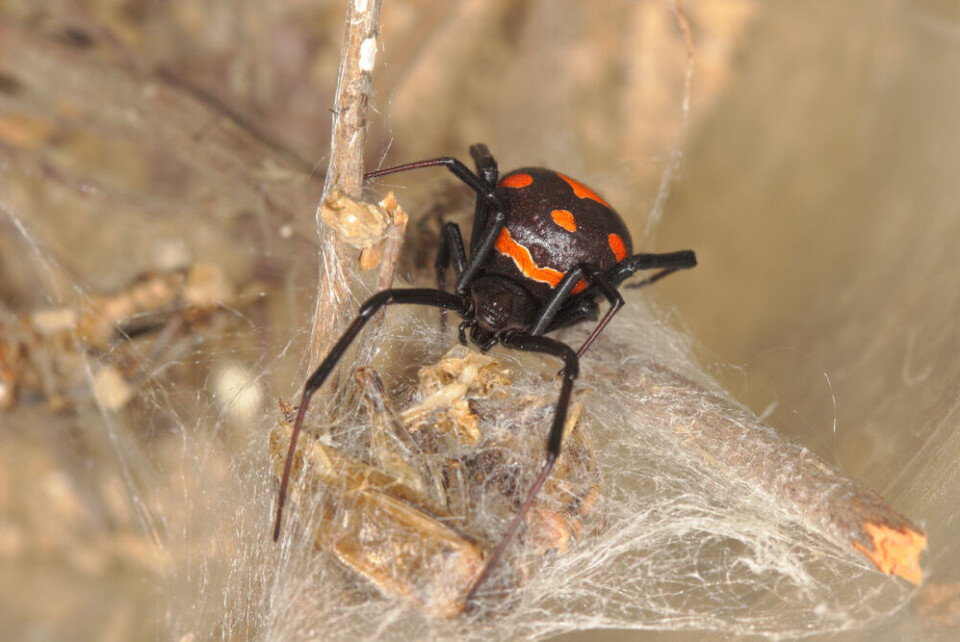-
Cars and driving: What's new in France in 2026
Including the new pollution tax on used cars, motorway toll changes and speed camera changes
-
More than a quarter of new car registrations in France are electric
EV sales hit new record in November 2025
-
Ryanair’s presence confirmed at Tours-Val de Loire airport
Bookings for summer flights to Marseille and Morocco are already open
Black widow seen in southwest France for first time in two centuries
The ‘most dangerous spider in Europe’ is normally seen in the southeast

A spider dubbed ‘the most dangerous in Europe’ has been seen on the Atlantic coast, south west France, the first sighting in the area in 200 years.
The notorious black widow was seen in Cap-Ferret in Gironde (Nouvelle-Aquitaine) by naturalists at the end of October.
It came after Christian Géry, a retired professor and member of the entomology (insect study) group in Bordeaux, began to explore the area to search for new species.
"I was looking for beetles behind plants and that's when I saw a spider," he told Actu Bordeaux.
Taken aback by what he saw, he sent a photo to an entomologist friend, who decided to contact an arachnologist (spider specialist).
They confirmed that the find was of a black widow spider (Latrodectus tredecimguttatus). The spider is usually found on the Mediterranean coast or Corsica.
This is the first time that the spider has been seen on the Atlantic coast for more than 200 years.
Mr Géry said: “The spider may have been there for two centuries, but no one had seen it because they live under plants in the dunes.”
The black widow is identified by its black body, with 13 coloured spots. It is notorious for its poison and dominating behaviour, especially the female of the species. When the female needs energy to lay eggs, it eats its male mate.
A black widow bite contains toxins that paralyse the victim’s muscles. The spider then wraps its victim in its web.
Mr Géry said: “Its web isn’t really a ‘web’ as it’s not geometric. It’s not really a web but rather sticky filaments that are stronger than steel.
“There is no real health risk for humans. The venom is toxic but its bite is not fatal for humans. The dose of venom is not enough to kill a human.”
However, a bite is still dangerous. It can paralyse the affected limbs for several weeks.
Related articles
Toxic spider bites twice in a week
‘May contain spider’: horror at language error in French supermarket
























